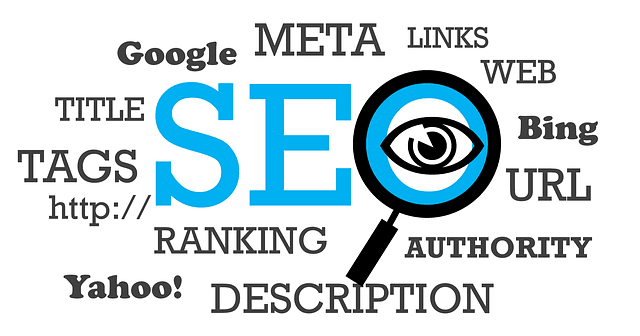Vital for searchability and visibility, search engine optimisation (SEO) makes a huge difference to the success of your website and business. Yet, thanks to Google updates and other search engine progressions, SEO success isn’t always straightforward.
What is SEO?
Search engine optimisation is the process of optimising web pages and their content to be easily discoverable by users searching for terms relevant to your website.
Put very simply, SEO separates out into three categories, ‘on-page SEO‘, ‘off-page SEO‘ and ‘technical SEO‘.
On-page SEO is (rather obviously) everything on the page itself that indicates what the page, or your site, is all about. This practice includes elements like title tags, headings and all-important written content.
Off-page SEO gets slightly more complicated. Factors that include everything that isn’t on the page itself are compiled to indicate how popular and authoritative your page or website is.
Finally, technical SEO refers to improving the technical aspects of a website in order to increase the ranking of its pages by search engines. Making a website faster, easier to crawl and set up in a way that helps search engines read and interpret your content are the pillars of great technical SEO.
So, what is it that makes SEO so difficult?

So we have our SEO categories and a list of techniques for each… theoretically, we should just be able to build a website utilising basic SEO techniques, build some links to the site, then sit back and watch your rankings go up, right? Wrong.
The landscape of SEO is constantly evolving and what might have worked for your website 6 months, might not work as effectively today. Search engines are always updating their standards and guidelines to help improve their user’s experiences – Google alone updates their main algorithm anywhere from 500-600 times a year!
This being said, certain fundamental SEO principles remain unchanged.
For example, targeting just keywords to directly improve organic rankings may no longer work as effectively as it used to, but choosing the right keywords is still an important piece to the puzzle.
In this article we will take a look at the more essential basic SEO practices and discuss how implementing them can positively affect your website quality and rankings.
SEO Tips
Title tag and headers strategy
The title tag of each page is what is displayed on Google. These should include the key terms you want to rank for.
Headings break up your content and should be the largest words displayed. Search engines, therefore, take these into account when ranking your pages. So again, you should be including key terms in your headings.
Keyword research
The simple goal of keyword research is to find out what your target audience is searching for and what it will take to actually rank for those keywords. There are many keyword discovery tools to access online, however, effective keyword research is much more than just searching the words YOU associate with YOUR company. You should:
- Study your niche – Dive deep to learn how others perceive and search for your topic or niche. Talk with existing customers to find out the terms they use when describing your brand, company, product or service. Try to think from the perspective of your potential customers and get involved in online communities to get a sense of discussions and pain points mentioned regarding your niche.
- Define your goals – Ask yourself important and introspective questions like, ‘who are you?’, ‘what is your brand about?’ and ‘what makes you special?’ It’s important to define your goal because it will provide a direction for your SEO strategy and plan. The search terms that you will eventually use should be aligned to your goals, ideally segmented into different content marketing funnels.
- Make a list of relevant topics and seed keywords – Based on the main category of your brand and the goals you aim to achieve, break it down into smaller topics and then from that list, create a list of seed keywords. These will be related to your various topics, and more importantly, will be terms that your target audience might be searching on Google.
- Study search intent – Today, Google’s machine learning search algorithms compare search terms with user queries to learn about search intent. Search intent is defined as the intent or reason behind why people search for a specific term.
- Identify long-tail keywords – Long-tail keywords are more descriptive, often related to your brand’s smaller sub-topics and are when the user has a better idea of what they are searching for. Long-tail keywords usually get fewer clicks, however since they are focused on such a specific topic or product, they often have a higher conversion rate.
- Research your competitors – A very important step! Doing keyword research on Google about your brand alone is not nearly enough. You also need to be aware of what your competitors are doing. The better you understand the content landscape of your industry, the better it will be for your SEO.
Written content and the new indexed passages
The all-important webpage content!
It’s all very well optimising all the right bits, but the actual content on your page needs to be relevant and of high-quality. You need it to be useful for people landing on the page. Whether that is by being informative, giving them the information they need to carry on further into your website, or otherwise. It should be easy to read and provide value.
Additionally, as part of the recent Google update, indexed passages has been set into motion.
Passage Indexing is essentially about improving results for long-tail search queries by making specific sentences and paragraphs that best answer the search query a new ranking factor. This comes as an upgrade from Google’s old method of indexing, where whole pages were indexed and assigned to a certain topic and corresponding subtopics that can be found on the page.
Technical SEO essentials
Making a website faster, easier to crawl and set up in a way that helps search engines read and interpret your content are the pillars of great technical SEO. The basic technical seo essential checklist includes:
- Robots.txt – You can give robots directions on your site by using the robots.txt file. Robots.txt are a set of instructions that live in your website’s root directory and tell crawlers what they can and can’t crawl.
- Meta robots tags – Similar to robots.txt, meta robots tags use the ‘NoIndex’ and ‘NoFollow’ attributes to tell crawlers not to index a page or follow a page’s links.
- XML sitemap – To put it simply, an XML sitemap is a roadmap that directs Google to each destination on your site. Sitemaps contain the list of every page on a website, along with some important details about those pages.
- Page speed – Page speed and load time are really important for SEO and user experience.
- Structured data – Structured data, also known as schema markup, is code that provides search engines with explicit information about your page that helps them understand its purpose and context.
User experience
Multiple features of technical SEO, such as page load speed, interactivity and responsiveness hugely impact how a user may engage with and experience your site.
Late last year, Google announced it would be rolling out a brand new user experience update in May 2021. The update looks to impact websites from all sectors and will combine a variety of user experience criteria – including many technical SEO features – as elemental ranking factors.
The key message of the update was the emphasis on Google’s ‘Core Web Vitals’. This includes:
- Responsiveness – ‘First Input Delay’ from Core Web Vitals
- Load Speed – ‘Largest Contentful Paint’ from Core Web Vitals
- Visual Layout Stability – ‘Cumulative Layout Shift’ from Core Web Vitals
- Mobile-Friendly
- Safe and Clean Website Code – safe browsing with no malware
- Use of HTTPS Encryption
- No Intrusive Interstitials
In addition to the elements above, a responsive site design also does wonders for your user experience, site interaction and eventually, traffic and revenue. Websites that have responsive design are more likely to be seen as mobile-friendly to search engines. A responsive web design is more than just having a mobile version of your site – this is mobile-friendly, rather than responsive.
A responsive web design focuses on every option of a user’s environment – what device are they using whilst browsing your site? An efficient responsive design will scale a website to render according to the device screen, whatever the size.
Need help with SEO?
Should you need a helping hand improving your website SEO and boosting your online presence and rankings, our team of SEO experts are here to help and tailor an SEO strategy suited to you.
Read up on our SEO services, take our DMQ below or get in touch for a chat on how we can help you gain better positions over your competitors.
So we have our SEO categories and a list of techniques for each… theoretically, we should just be able to build a website utilising basic SEO techniques, build some links to the site, then sit back and watch your rankings go up, right? Wrong.
The landscape of SEO is constantly evolving and what might have worked for your website 6 months, might not work as effectively today. Search engines are always updating their standards and guidelines to help improve their user’s experiences – Google alone updates their main algorithm anywhere from 500-600 times a year!
This being said, certain fundamental SEO principles remain unchanged.
For example, targeting just keywords to directly improve organic rankings may no longer work as effectively as it used to, but choosing the right keywords is still an important piece to the puzzle.
In this article we will take a look at the more essential basic SEO practices and discuss how implementing them can positively affect your website quality and rankings.
SEO Tips
Title tag and headers strategy
The title tag of each page is what is displayed on Google. These should include the key terms you want to rank for.
Headings break up your content and should be the largest words displayed. Search engines, therefore, take these into account when ranking your pages. So again, you should be including key terms in your headings.
Keyword research
The simple goal of keyword research is to find out what your target audience is searching for and what it will take to actually rank for those keywords. There are many keyword discovery tools to access online, however, effective keyword research is much more than just searching the words YOU associate with YOUR company. You should:
- Study your niche – Dive deep to learn how others perceive and search for your topic or niche. Talk with existing customers to find out the terms they use when describing your brand, company, product or service. Try to think from the perspective of your potential customers and get involved in online communities to get a sense of discussions and pain points mentioned regarding your niche.
- Define your goals – Ask yourself important and introspective questions like, ‘who are you?’, ‘what is your brand about?’ and ‘what makes you special?’ It’s important to define your goal because it will provide a direction for your SEO strategy and plan. The search terms that you will eventually use should be aligned to your goals, ideally segmented into different content marketing funnels.
- Make a list of relevant topics and seed keywords – Based on the main category of your brand and the goals you aim to achieve, break it down into smaller topics and then from that list, create a list of seed keywords. These will be related to your various topics, and more importantly, will be terms that your target audience might be searching on Google.
- Study search intent – Today, Google’s machine learning search algorithms compare search terms with user queries to learn about search intent. Search intent is defined as the intent or reason behind why people search for a specific term.
- Identify long-tail keywords – Long-tail keywords are more descriptive, often related to your brand’s smaller sub-topics and are when the user has a better idea of what they are searching for. Long-tail keywords usually get fewer clicks, however since they are focused on such a specific topic or product, they often have a higher conversion rate.
- Research your competitors – A very important step! Doing keyword research on Google about your brand alone is not nearly enough. You also need to be aware of what your competitors are doing. The better you understand the content landscape of your industry, the better it will be for your SEO.
Written content and the new indexed passages
The all-important webpage content!
It’s all very well optimising all the right bits, but the actual content on your page needs to be relevant and of high-quality. You need it to be useful for people landing on the page. Whether that is by being informative, giving them the information they need to carry on further into your website, or otherwise. It should be easy to read and provide value.
Additionally, as part of the recent Google update, indexed passages has been set into motion.
Passage Indexing is essentially about improving results for long-tail search queries by making specific sentences and paragraphs that best answer the search query a new ranking factor. This comes as an upgrade from Google’s old method of indexing, where whole pages were indexed and assigned to a certain topic and corresponding subtopics that can be found on the page.
Technical SEO essentials
Making a website faster, easier to crawl and set up in a way that helps search engines read and interpret your content are the pillars of great technical SEO. The basic technical seo essential checklist includes:
- Robots.txt – You can give robots directions on your site by using the robots.txt file. Robots.txt are a set of instructions that live in your website’s root directory and tell crawlers what they can and can’t crawl.
- Meta robots tags – Similar to robots.txt, meta robots tags use the ‘NoIndex’ and ‘NoFollow’ attributes to tell crawlers not to index a page or follow a page’s links.
- XML sitemap – To put it simply, an XML sitemap is a roadmap that directs Google to each destination on your site. Sitemaps contain the list of every page on a website, along with some important details about those pages.
- Page speed – Page speed and load time are really important for SEO and user experience.
- Structured data – Structured data, also known as schema markup, is code that provides search engines with explicit information about your page that helps them understand its purpose and context.
User experience
Multiple features of technical SEO, such as page load speed, interactivity and responsiveness hugely impact how a user may engage with and experience your site.
Late last year, Google announced it would be rolling out a brand new user experience update in May 2021. The update looks to impact websites from all sectors and will combine a variety of user experience criteria – including many technical SEO features – as elemental ranking factors.
The key message of the update was the emphasis on Google’s ‘Core Web Vitals’. This includes:
- Responsiveness – ‘First Input Delay’ from Core Web Vitals
- Load Speed – ‘Largest Contentful Paint’ from Core Web Vitals
- Visual Layout Stability – ‘Cumulative Layout Shift’ from Core Web Vitals
- Mobile-Friendly
- Safe and Clean Website Code – safe browsing with no malware
- Use of HTTPS Encryption
- No Intrusive Interstitials
In addition to the elements above, a responsive site design also does wonders for your user experience, site interaction and eventually, traffic and revenue. Websites that have responsive design are more likely to be seen as mobile-friendly to search engines. A responsive web design is more than just having a mobile version of your site – this is mobile-friendly, rather than responsive.
A responsive web design focuses on every option of a user’s environment – what device are they using whilst browsing your site? An efficient responsive design will scale a website to render according to the device screen, whatever the size.
Need help with SEO?
Should you need a helping hand improving your website SEO and boosting your online presence and rankings, our team of SEO experts are here to help and tailor an SEO strategy suited to you.
Read up on our SEO services, take our DMQ below or get in touch for a chat on how we can help you gain better positions over your competitors.











